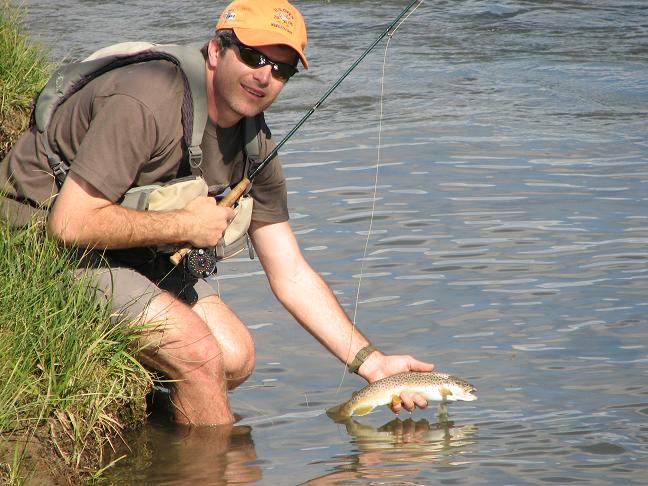Incidental fishing in Utah – Christoff Badenhorst
On a recent visit to the United States we were driving from the Grand Canyon in Arizona to Bryce canyon in South Central Utah. These parks have some of the most magnificent scenery you will see anywhere. On the way we spent the night in a cheap Motel in Kanab (

East Fork of the Sevier
Next day we drove about 60 miles (America remember, about 96 km) north on highway 89 to Bryce Canyon. I was lazing in the co-driver seat when suddenly I was wide awake and paying attention. We had crossed a crystal clear stream flowing out of nowhere called the Asay Creek (They pronounce it AC Creek). The road follows the river, and a few miles later crosses the Mammoth Creek, also flowing strongly and very clear. The thermometer in the car was over 100 degrees Fahrenheit (about 38 degrees Celsius), and although I was watching the river I didn’t have much hope. The next little town is called Hatch (no joke) and a few miles later I saw a sign to turn off to a fly shop called Panguitch Anglers. By this time I was jumping out of my skin. I had all my fly fishing gear in the boot because we were actually heading for Montana.
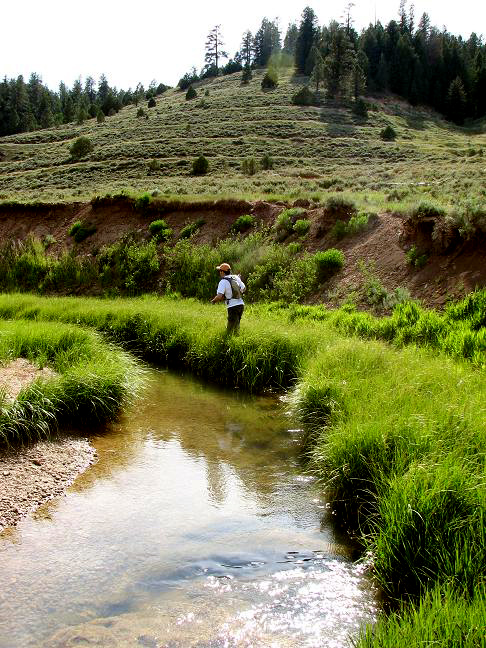
It was a typical wooden ranch house with a sign showing parking in front of what must have once been and old stable. The owner, Jerry, turned out to be one of the friendliest people I’ve met. My first question to him was, ‘Are there any trout in the river.’ “Full of brown trout” he said. Brown trout! He told us which flies would work and what sections were public, where you could get access and that the river becomes the Sevier (pronounced Severe) from the confluence of the Asay and Mammoth creeks. Due to the cattle ranches it was milkier the further down you went. He also said that I must try the East fork of the Sevier, a small stream filled with difficult brown, brook and cutthroat trout. After stocking up with a few local flies (mostly big hoppers) we set off for Bryce Canyon. During the day I convinced Nicole, my wife that I should do a bit of fishing in the late afternoon.
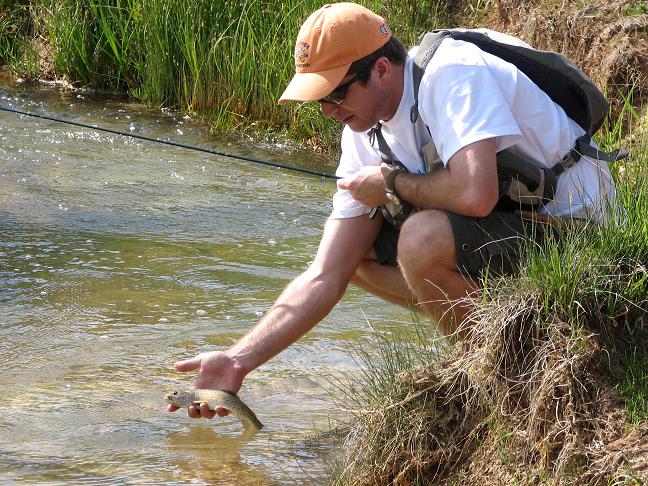
Bryce canyon was spectacular, and is a must see! On the way out I got a Utah fishing licence for US$12 and on Jerry’s directions turned off on the dirt road and drove 12 to 13 miles up to a meadow where you can fish the East Fork of the Sevier. We got there at about 4.30, parked the car on the side of the road, crabbed my gear and walked into the meadow. The river was tiny, crystal clear and unlike anything I’ve seen in
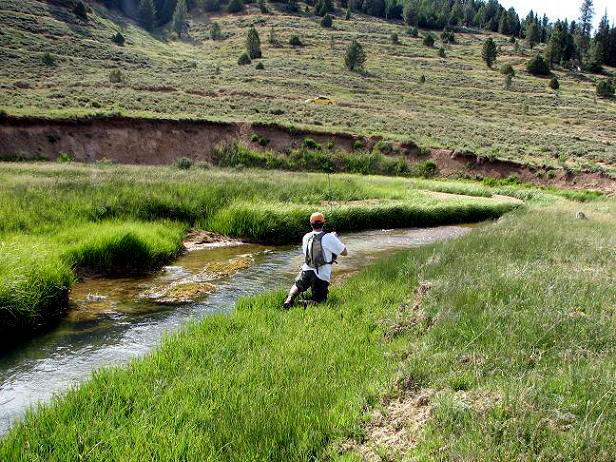
We had no accommodation for the evening so I had to force myself off the river at about 7 o’clock. We drove back to Hatch, a town with three or four motels and a Post Office. (If you swerve for a chicken in the road you also miss the town). Luckily the first place we tried had a room for US$40 a night. Reasonable for a double bed, hot shower, clean towels, cable TV and a bar fridge. There was still about an hour of daylight left and I spent it wisely. Drove a mile or two up from Hatch, parked on some farm road and fished the evening rise on the Sevier River. There was a mayfly and caddis hatch and I got a few browns on a black Goddard’s caddis, the biggest being about 13 inches. From the photos in the fly shop I knew there were big browns in the river, but they avoided me. This section of the river was filled with small fish.
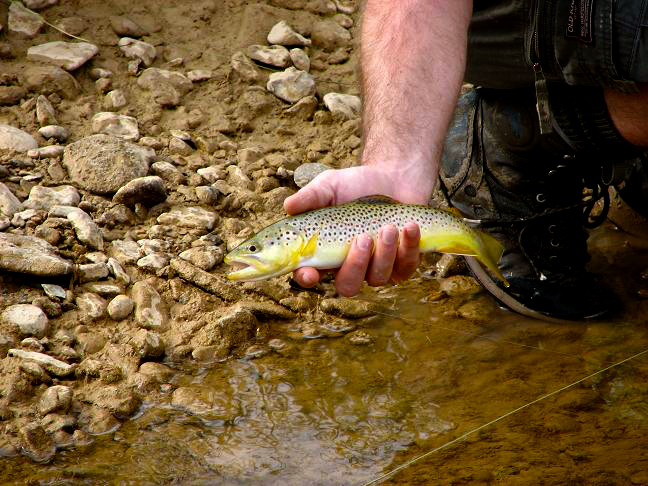
Back in Hatch only one diner was still open. we met a Zion Park ranger there, Rayne, who had fished on Asay creek that day. After the usual fly talk and showing him what a RAB looks like, we left. He was sleeping under a bridge in his sleeping bag that night.
Next morning we were due to go the Zion National Park, but I convinced Nicole that I should fish until about ten. We set off down some dirt road (again thanks to Jerry’s advice) to a section of the Mammoth Creek. The water was bitterly cold and for the first hour nothing moved even though there was a big mayfly hatch. Back at the road where a bridge crosses the river there was a nice pool. Not having much hope, but fishing carefully, I drifted the RAB through all the likely holding lies. Even flicked it under the bridge, drifting the fly from the shade into the deeper water in the sunlight. I was distracted by something and saw the RAB was gone. Only the spreading circles of the rise were on the water. Surprised as the fly had drifted over this spot at least ten times before, I lifted the rod and the fish was on. After a strong fight I landed a good sized brown, a beautiful fish with black and orange spots. Above the bridge the fish suddenly started rising, about five or six fish in the next 30 to 40 metres of water. Rayne arrived. He had started fishing early on the Sevier River, but fell into the water with his waders on and was freezing cold. Due to a head wind I was forced to creep up to the closest rising fish and it took the first drift. Offering the next fish to Rayne, he declined saying he was still too cold. It took the RAB. Looking back after landing it and taking a quick photo, Rayne was rigged up and ready to cast. He fished from the opposite side and we took two more fish each, the smallest about 14 inches. Then it was ten o clock and time to go, but not before a drift to a fish rising almost under the opposite bank produced the biggest trout of the day which broke me off. The scenery is etched in my mind, including those browns with their orange spots.

Mammoth Creek

Mammoth Creek brown
The same day we had temperatures of 110 degrees Fahrenheit in Zion National Park and the scenery was spectacular. This part of
